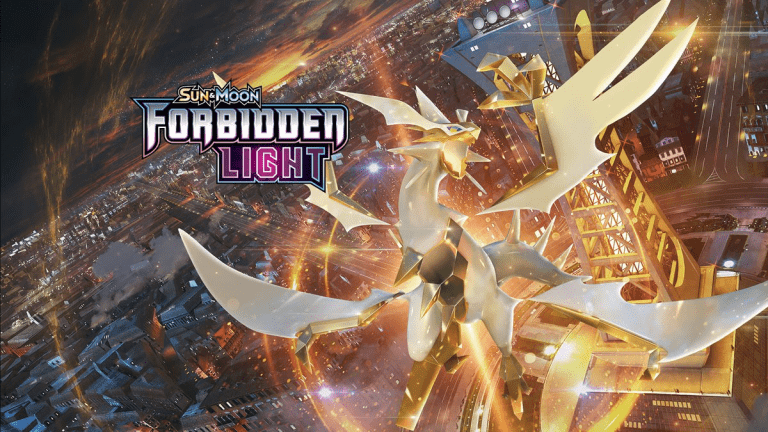James takes on Swansea
SWANSEA LEAGUE CUP RESULT – The Gamers’ Emporium
The lost thunder meta is rarely on people’s minds in recent times with the release of the new Team Up! set release, and new exciting decks rising from this introduction. However, for the sake of points, it was time to dip back into Lost thunders glory once more.
The selected deck was Zoroark-GX, alongside 2-2 lines of both Weavile and Lycanroc – for their efficiency in dealing with aspects of a powerful meta game. Weavile presents a heavy threat for Blacephalon GX, meaning they must be wary of Sneasels hitting the bench, and restrict their own abilities accordingly. Lycanroc’s Lysandre effect is inherently strong, and paired with an otherwise absent strong GX attack in a Zoroark deck, this card has seen countless victories at regional tournaments.
Round 1 – WW Blacephalon
With the technology to beat Blacephalon, the only task was to draw the cards, and ensure that investment into my threats was spread over the board. During the first game, Weavile took the first prizes on Blacephalon, and the game was sewn up a turn later after my opponent missed beast ring off a Lillie for 6. Lucky to be alive, Weavile was substituted for Lycanroc, and dangerous rogue cleaned the threat of beast ring from the board.
The second game was exceptional – I stared down a 5 energy board during my second turn, but only one Blacephalon. Sneasel was left unattended on the bench, so an ultra ball for Weavile and a Cynthia dug out the necessary energy to knock out Blacephalon – my opponent forced to play 4 abilities in order to play at the rate he wanted to. With a dead hand on the other side of the table, Weavile swept the board again; three knockouts for six prize cards.
Round 2 – WLW Blacephalon
A Blacephalon full of technology, which sacrificed some of its own consistency – an aspect that proved to be a downfall during the final game. My opponent was forced to resort to Tapu Lele GX as an attacker with a half baked board. The result was a focus down on Poipole in order to prevent energy acceleration, and then, with sufficient attackers established, a race was initiated to win the game.
Round 3 – WW Shining Genesect
When shining Genesect was flipped in front of me, the standard Venusaur deck-shell came to mind. But I was soon proven wrong as 2 Naganadel’s hit the board turn 2 alongside Venusaur, Genesect’s energy reload proving very powerful with Naganadel in play. The strategy I employed was to establish Alolan Muk early to deal with energy reload as a threat – but ditto hid from me under my prize cards until the very end of the game. Game one was therefore a prize race – the win came from Weavile’s ability to take down the otherwise tanky Venusaur in one hit as a result of a reliance on abilities on my opponents side of the board. and the power to recycle and redraw Acerola using zoroark-GX made knockouts difficult for the Genesect’s ramping attack. The second game was locked up by turn 2 – establishing Alolan Muk shut off energy reload – and damage was limited to two attachments. Once Weavile was employed to remove Venusaur from play again, the game was all but over – zoroark supreme in its consistency again.
Round 4 – ID n/a
A match against Zoroark Decidueye and Ninetales was avoided, by the points from the previous 3 wins being enough for qualification into top 4.
Top 4 – WLL ‘GasKan’ Malamar
Game one was the shortest of the three – my opponent playing Marshadow’s let loose ability under my own Alolan Muk’s ability lock for basic Pokemon ended in a game loss for him, whilst game two was barely longer – I started my own Marshadow, and my opponent tactically used bell of silence to lock me from benching anything but basic Pokemon – of which I drew none, outside of ditto prism star – the only basic I was unable to play due to its own ability!
Game three was close but Chimecho came through on turn one for my opponent again – locking me out of the game for three turns whilst I struggled to deal with it using Tapu Lele’s energy drive. By then, I was behind on the prize trade, and the inability to play Alolan Muk as a result of a necessity to use ditto aggressively resulted in Marshadow GX having ruthless power over my type disadvantaged Zoroarks.
Closing thoughts
Overall, this cup demonstrated the lost thunder meta game strongly, consistency is king, with many spread and counter energy decks placing outside the top 4. Zoroark took up two slots, and the other two taken by Malamar variants.
Weavile’s power was key to success once again – the ability to one shot a Pokemon-GX for just one energy attachment means it presents a threat your opponent must always respect – and if they fail to, you have a golden opportunity to strike at the heart of your opponents aggressive board state.
Marshadows’ let loose, in zoroark, was the one card effect could have done without – the technology was rarely better than using a Tapu Lele GX If searching for it using an ultra ball – since you know what you’re getting when selecting a supporter card!
The Lillie – nest ball engine let me down just once in ten games – Similar odds exist for missing Professor Elm’s lecture – and the increased energy attachments were so crucial in allowing development of multiple threats.
The one card I would have played instead – and definitely will do so going forward – would be an Alolan Grimer, reducing the critical nature of ditto to allow Alolan Muk to hit the board.






